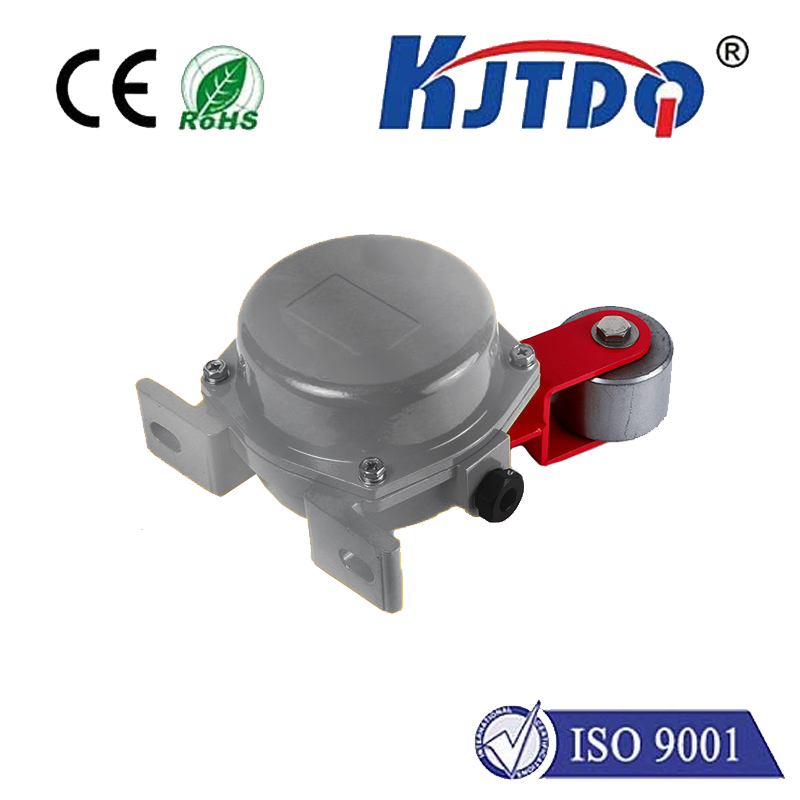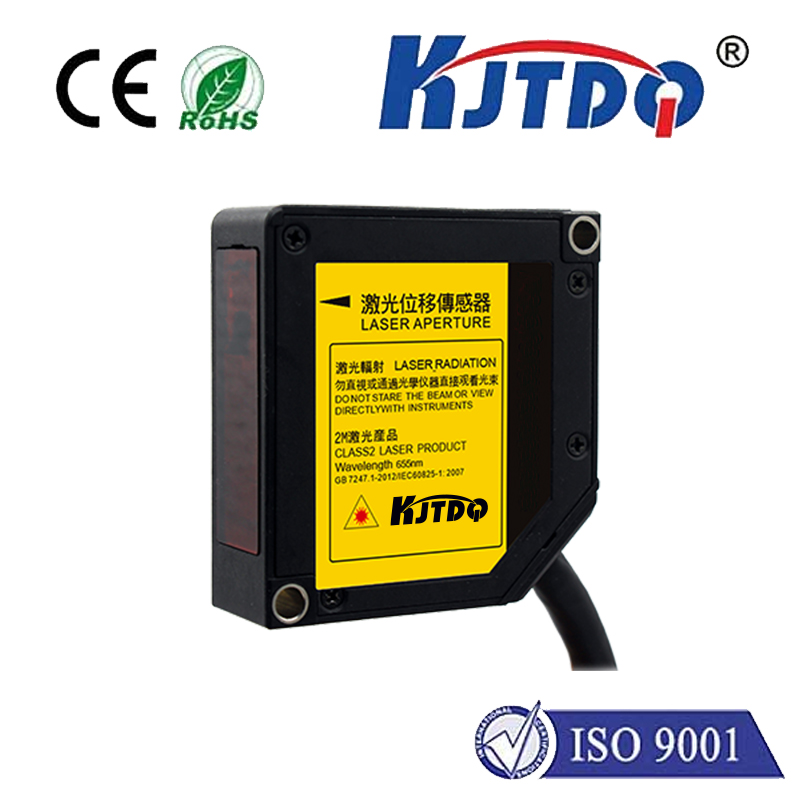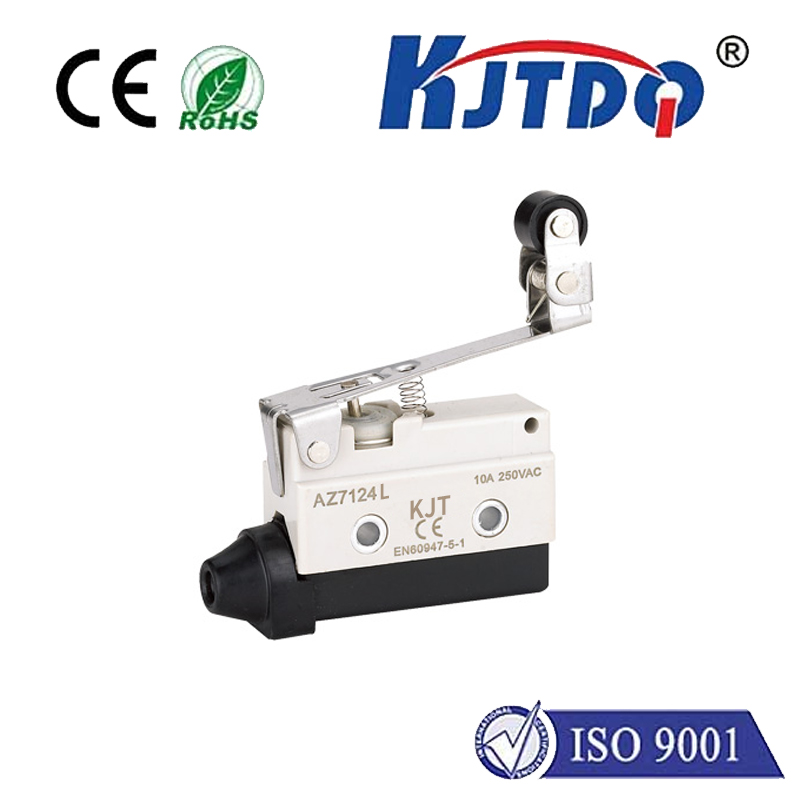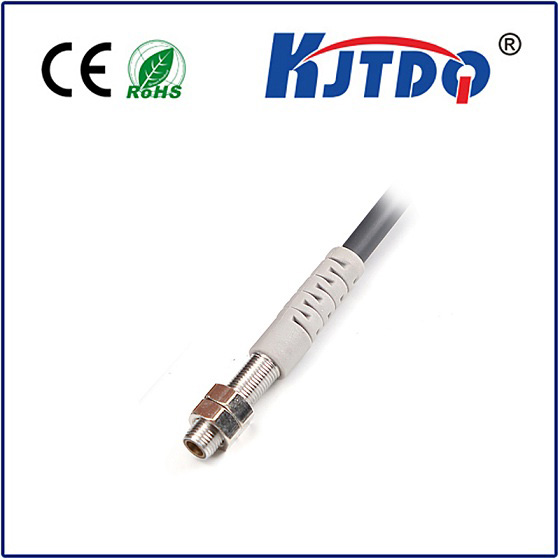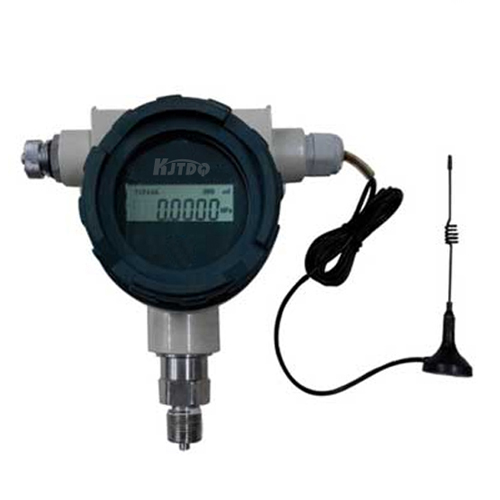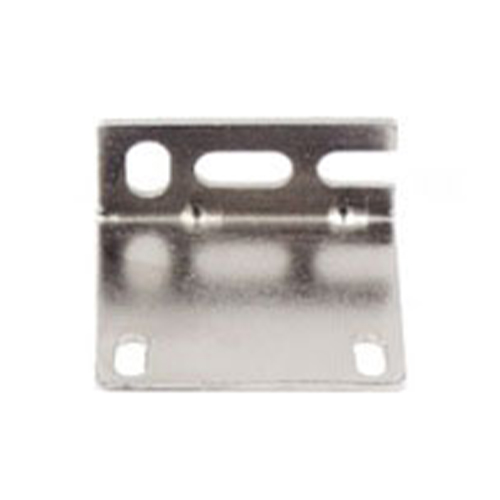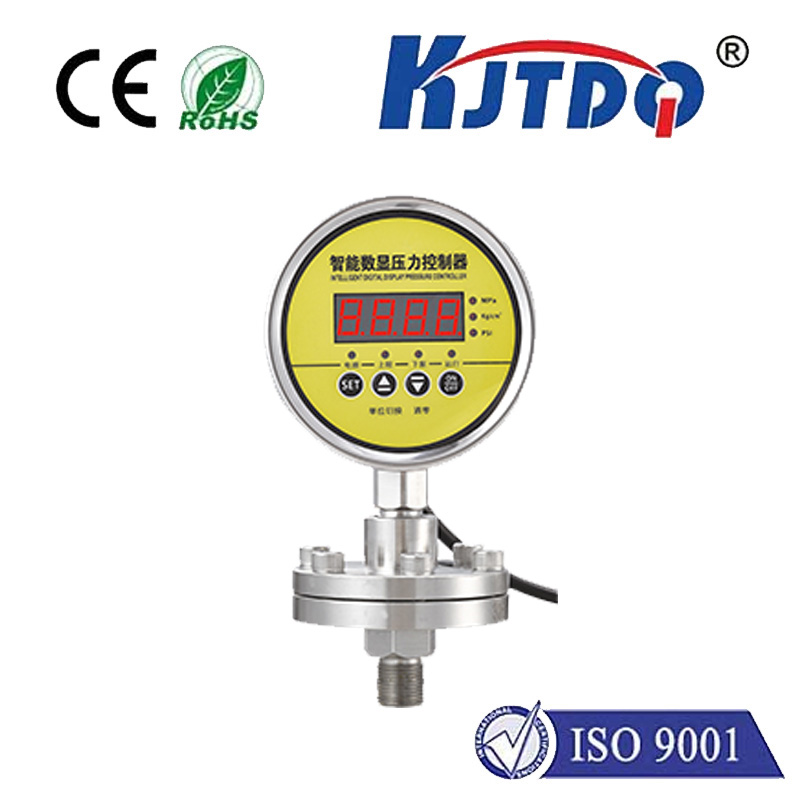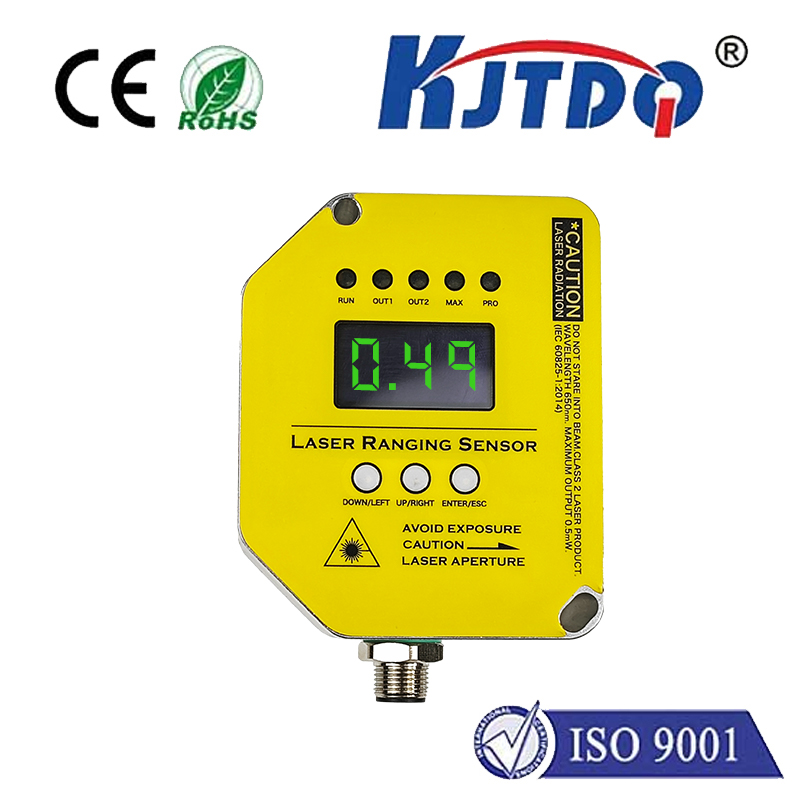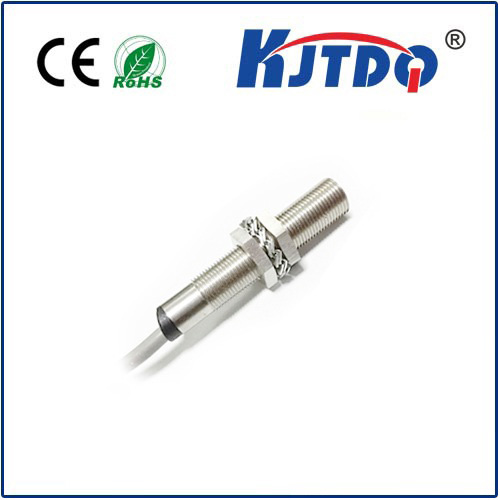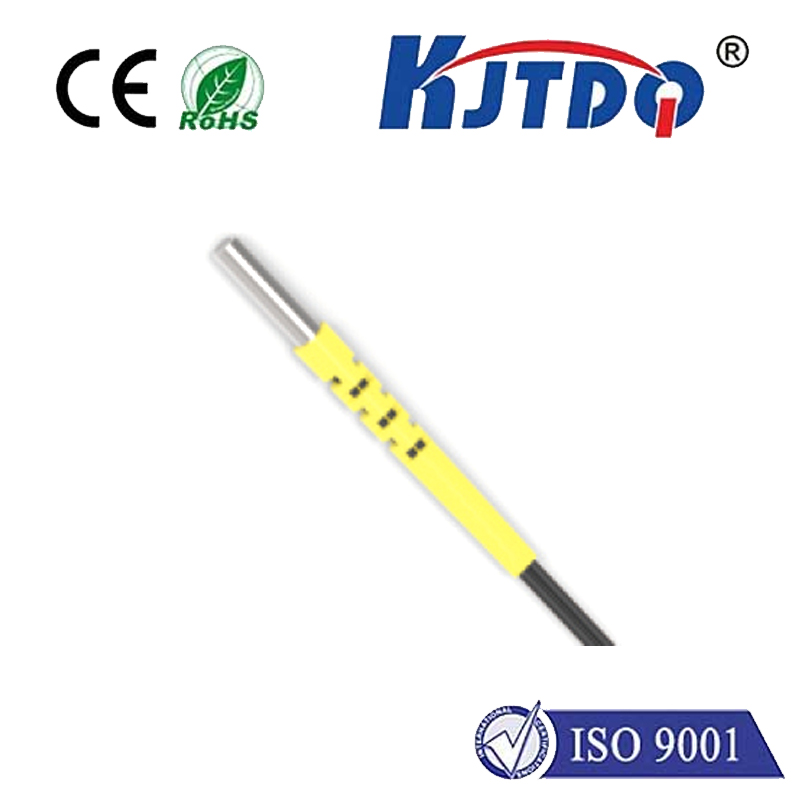E3FC-DP13 2M reflective photoelectric beam sensor
- time:2025-10-10 02:43:17
- Click:0
E3FC-DP13 2M Reflective Photoelectric Beam Sensor: Master Reliable Detection in Compact Spaces
Imagine a bustling assembly line where a critical verification step ensures every product has the correct component before packaging. Missing this step means costly rework or recalls. This is where the precision and robustness of photoelectric sensors shine, specifically the E3FC-DP13 2M reflective photoelectric beam sensor. Designed for efficiency and reliability, this compact powerhouse offers a practical 2-meter sensing range using a reflective principle, making it an indispensable tool in countless automation scenarios where space, cost, and durability are paramount.
Understanding the Reflective Photoelectric Principle
Unlike through-beam sensors requiring separate emitter and receiver units, the E3FC-DP13 utilizes a reflective (often called retro-reflective) sensing mode. Here’s the core operation:
- Internal Emitter: The sensor houses a built-in light source, typically an LED (often infrared for reliability and resistance to ambient light interference).
- Beam Projection: This LED projects a focused beam of light outwards.
- Reflector Requirement: A specialized retro-reflector, installed opposite the sensor at the desired detection point, is crucial. This unique reflector bounces the emitted light beam directly back towards its source along the same path, regardless of minor misalignments.
- Internal Receiver: The sensor also contains a photodetector (receiver) unit.
- Detection Logic: The sensor constantly monitors the presence and intensity of the reflected light beam hitting its receiver.
- Object Absent: The reflected beam reaches the receiver strongly – sensor output is OFF (or ON, depending on configuration).
- Object Present: When an object interrupts the beam path between the sensor and the reflector, the reflected light is blocked or significantly diminished – sensor output switches state (ON or OFF).
The E3FC-DP13 2M Advantage: Where Compactness Meets Performance
This specific model offers distinct advantages tailored for demanding industrial environments:

- Optimized 2-Meter Sensing Range: The 2M range is a significant sweet spot. It provides substantial coverage compared to tiny diffuse sensors yet fits perfectly in applications where installing a long-range through-beam system would be impractical or prohibitively expensive. Think conveyor sections, entryways on machinery, pallet presence checks, or guarding access points within machinery enclosures.
- Robust Construction for Industry: Built to withstand harsh conditions, it typically features:
- IP67 Protection Rating: Impervious to dust ingress and capable of withstanding immersion in water up to 1m for 30 minutes. This makes it ideal for washdown areas, outdoor use (within spec), or dusty production floors.
- Resistant Housing: Often constructed from metal or high-grade plastic resistant to common industrial chemicals, oils, and physical knocks.
- Stable Optics: Engineered to minimize the impact of ambient light fluctuations or background interference, thanks to polarized optics – a key feature distinguishing true retro-reflective sensors from simple diffuse types. These optics ensure the sensor reliably detects only the light reflected back from its matching reflector, ignoring stray reflections from shiny surfaces nearby.
- Simple Installation & Alignment: The retro-reflective principle significantly simplifies setup. You only need to mount the sensor unit and position its corresponding reflector on the opposite side, roughly aligned. The reflector’s design provides a large “capture range,” forgiving minor misalignments. This saves valuable installation and maintenance time compared to precisely aligning separate emitter and receiver units for through-beam sensors.
- Cost-Effectiveness: Needing only one sensor unit and a reflector (instead of two separate emitter/receiver units plus cabling for both) translates to lower overall system cost, wiring complexity, and mounting hardware needs.
Key Technical Specifications Driving Reliability
Understanding the core specs helps select the right sensor:
- Sensing Range: 2 meters (2M) confirmed to the reflector. This is the nominal, reliable detection distance under standard conditions.
- Sensing Mode: Retro-reflective.
- Light Source: Infrared LED (commonly used for stability).
- Polarized Optics: Yes. Essential for rejecting false triggers from reflective backgrounds or objects.
- Output Configuration: Typically features an NPN or PNP transistor output (NO/NC switchable, often via teach-in or wiring), compatible with most PLCs and controllers. The “DP13” in the model often signifies specific terminal/basket connector types.
- Power Supply: Usually operates within a standard industrial DC voltage range (e.g., 12-24V DC).
- Environmental Rating: IP67 is standard, ensuring resilience against dust and water jets/immersion.
- Response Time: Ultra-fast (milliseconds), suitable for high-speed production lines.
- Housing Material: Rugged metal (e.g., nickel-plated brass) or reinforced plastic.
Crucial Applications Where the E3FC-DP13 2M Excels
This sensor’s blend of range, compactness, and durability makes it perfect for:
- Conveyor Line Monitoring: Detecting presence/absence of packages, boxes, or components at transfer points, filling stations, or diverters over sections up to 2 meters wide.
- Access & Safety Guarding: Monitoring access doors, safety gates, or light curtain bypass points to ensure they are closed before enabling machine operation.
- Pallet & Load Handling: Verifying pallet presence/positioning on racks, lifts, or within automated storage systems.
- Machine Tooling: Confirming material feed into machines (e.g., saws, presses, CNC loaders), detecting part ejection, or verifying fixture closure.
- Packaging Machinery: Checking case flaps are down, detecting filled bottles/cans on line, verifying label application.
- Board Counting/Stack Control: Detecting the top surface of stacks of material (wood, metal, plastic sheets) within its sensing window.
Why Choose Polarized Retro-Reflective?
The E3FC-DP13’s use of polarized optics is a significant advantage over non-polarized diffuse or simple retro-reflective sensors:
- Immunity to Shiny Objects: Shiny surfaces like metal, glass, or plastic containers often reflect ambient light wildly. A non-polarized sensor might misinterpret this stray reflection as its own beam, failing to detect an object. Polarized filters ensure the sensor only recognizes light reflected back specifically from its associated polarized reflector, ignoring reflections from other surfaces.
- Stable Detection: Provides consistent performance even in environments with complex backgrounds or reflective products moving on a line.
- Reduced False Triggers: Leads to higher system uptime and reduced maintenance headaches caused by nuisance stops.
Implementing for Success: Best Practices
Maximize the performance of your E3FC-DP13 2M sensors:
- Use the Correct Reflector: Always pair the sensor with its manufacturer-specified retro-reflector. Generic reflectors might not provide the required return signal strength or polarization compatibility.
- Secure Mounting: Ensure both sensor and reflector are rigidly mounted to minimize vibration-induced misalignment.
- Keep Optics Clean: Regularly wipe the sensor’s lens/optics and the reflector surface to prevent dust, oil, or grime buildup that can attenuate the light beam.
- Consider Environment: While robust, avoid pointing the sensor directly at intense light sources if possible. Ensure operating temperature and humidity fall within the sensor’s rated specifications.
- Verify Alignment: During initial setup and periodic maintenance, trigger the beam (e.g., wave your hand) at various points along the detection path to ensure consistent operation.
The **












